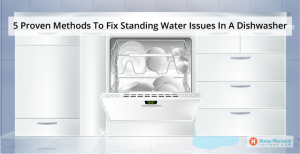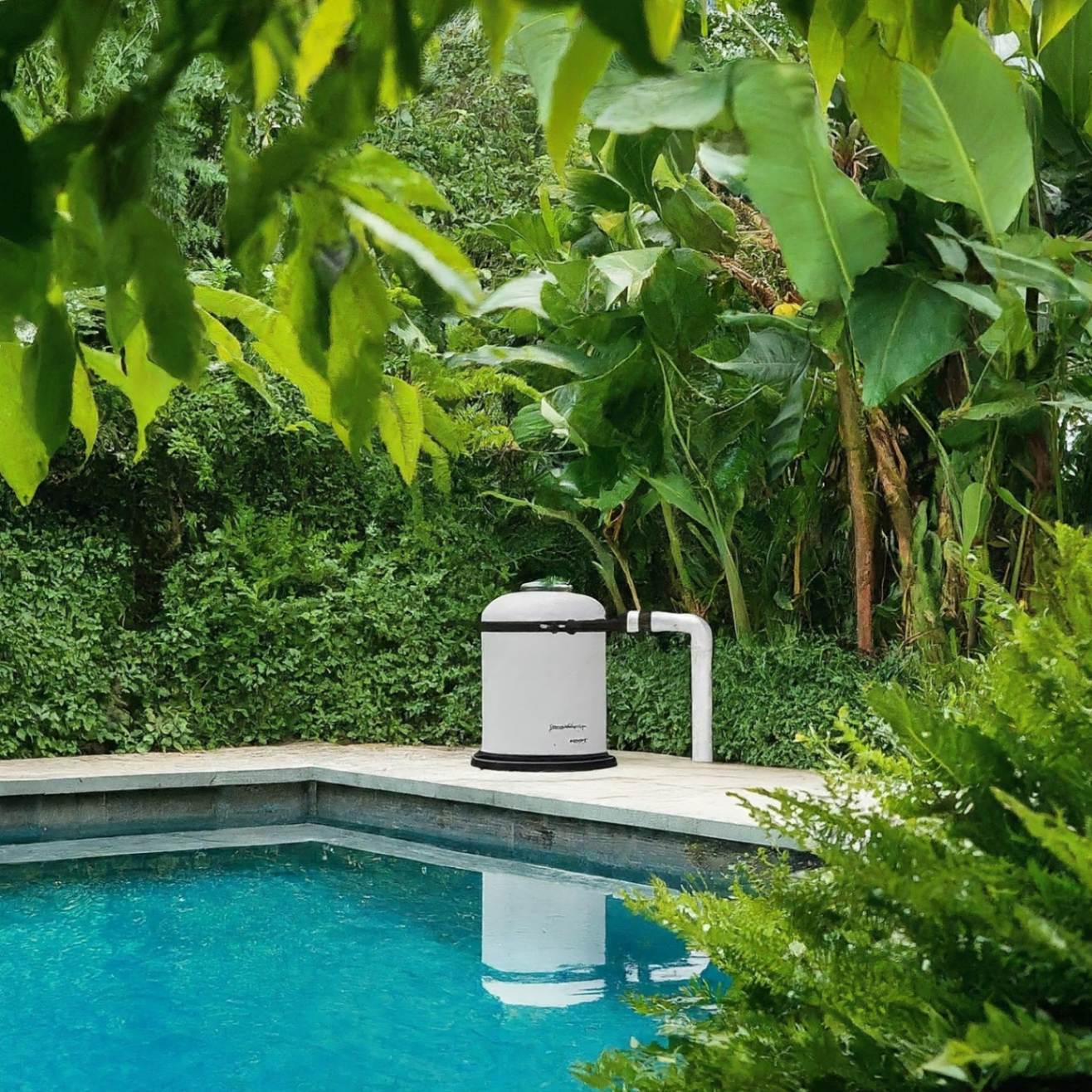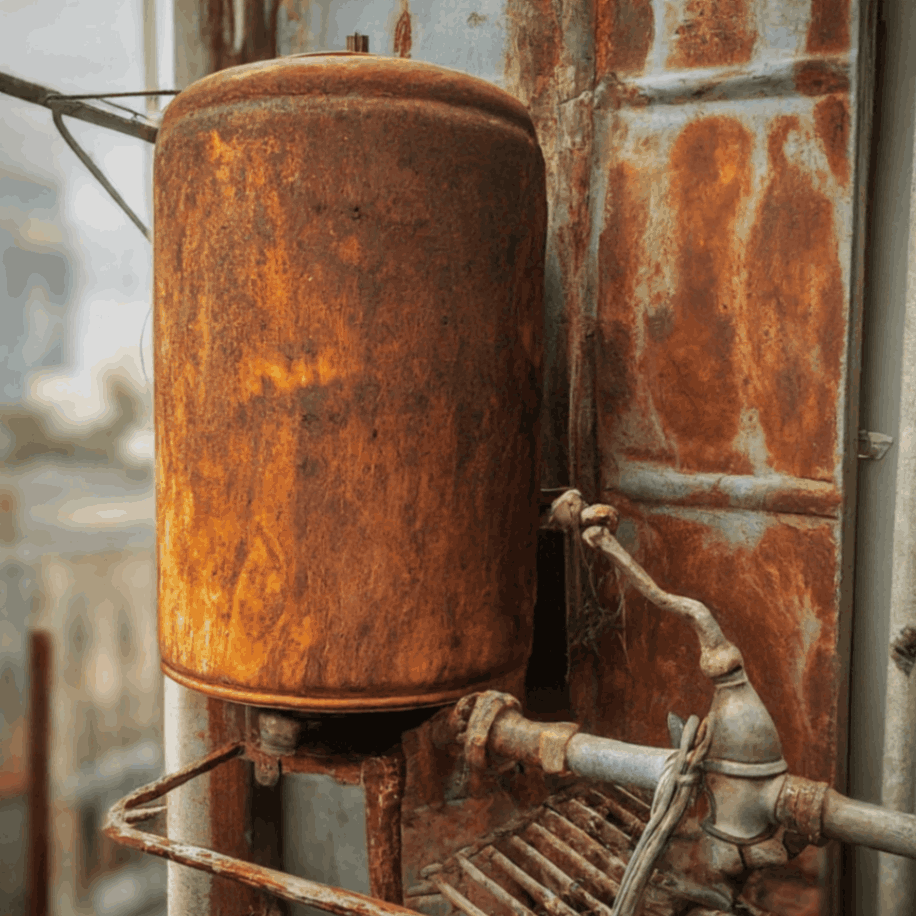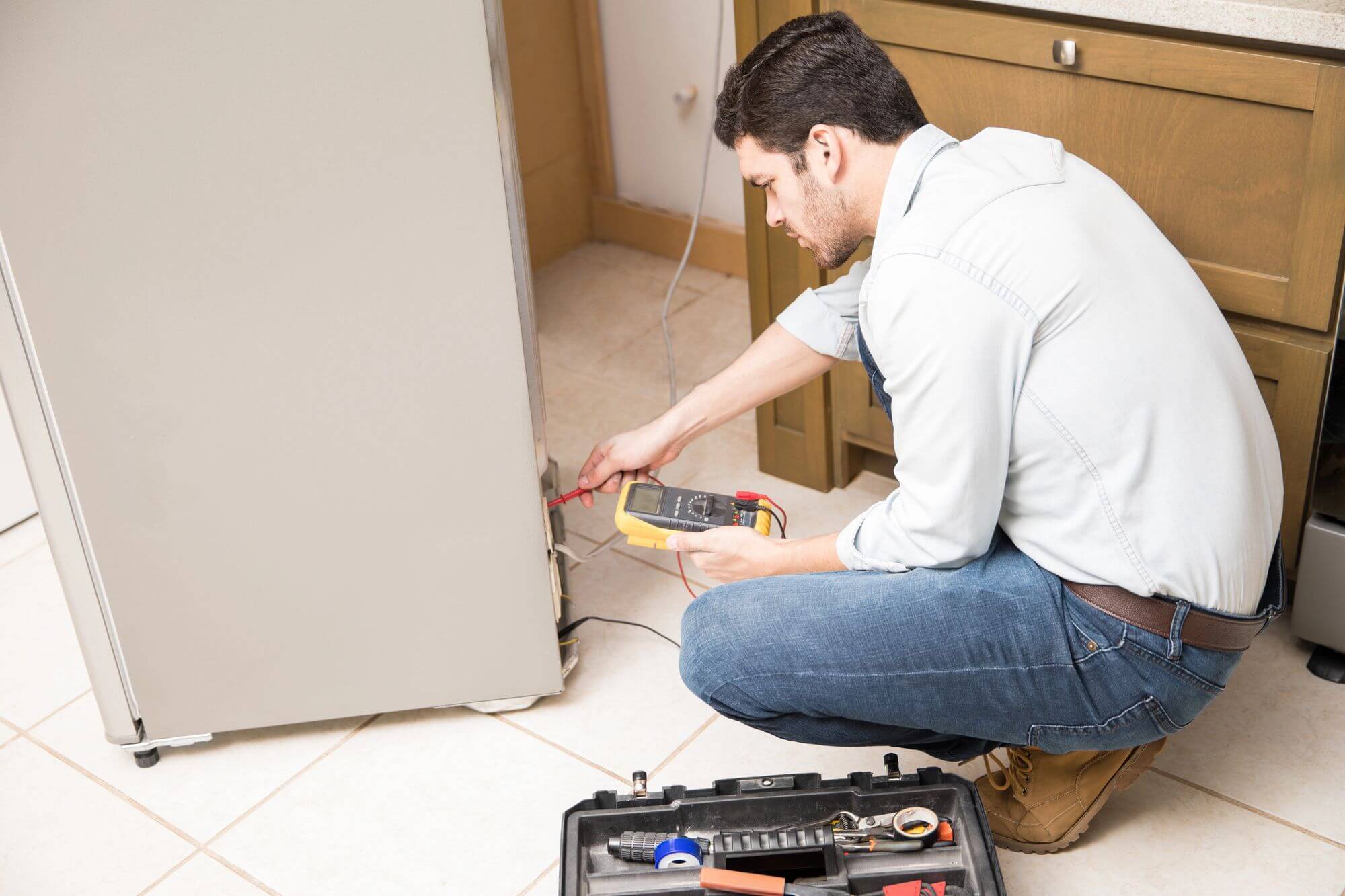5 Proven Methods To Fix Standing Water Issues In A Dishwasher
Dishwashers are integral appliances that ensure your plates, spoons, vessels, and containers always remain spick and span. But at times, the device can start giving trouble due to standing water in the dishwasher, which can be a real nuisance for everyone at home. However, it can also be quite a challenge for homeowners to understand why their dishwasher is full of water.
If you find water in the bottom of the dishwasher, there is a problem with the device, and immediate attention will be required. In many instances the device may have turned off due to a power outage or because of a standard mechanical error causing water build-up. You can try restarting the device once to make sure it’s back to its factory setting for a quick fix. If the problem persists even after trying to fix the device with the best possible action, you will need to call in a trained technician to fix the malfunctioning appliance.
This guide will dig deeper and help you understand the best possible methods out there to fix water left in the dishwasher. The post will also help you understand the different repair options you could opt for if you cannot fix the device. However, let’s answer some critical questions first to help you understand lots more about standing water in the dishwasher.

Why Is There Water In The Bottom of My Dishwasher?
Water pooling in the dishwasher can occur due to multiple reasons. Some of the most common causes are a problem with the drain hose or clogged garbage disposal. The following pointers are also prominent reasons as to why your dishwasher holds water.
- Many a time, leftover food gets accumulated at the bottom of your device, causing water to accumulate and choking the drainage system.
- At times, there could be minor blockages in your dishwasher interiors, generating water build-ups.
- Due to improper leveling of your appliance, the front or rear of your device may have lost balance, stopping water from passing through effortlessly.
- If a broken part of an item gets stuck in your device, the water float may be jammed, causing dirty water in the dishwasher.
- The supply line and the drain line of your device may accumulate with unnecessary debris or even be damaged, inducing water to get collected.
Now that you are aware of the significant reasons causing water accumulation at the bottom of your device, you must know how to get rid of it. The next section will help you understand how to drain the device effectively.
How To Unclog A Dishwasher With Standing Water?
If the filters of the device are not cleaned regularly, water can build-up. Your device’s critical components, such as the drain pump or motor, could also be giving way, causing water accumulation. To drain your dishwasher effectively, you will need to follow a few simple steps mentioned below.
- Always make sure the device is powered off before beginning to unclog
- Remove all the dishes before starting the process
- Use cloth towels and buckets to get rid of the standing water stuck inside
- Make sure to wipe the interiors and exterior of the device once the water is removed
How To Fix Standing Water In A Dishwasher?
Fixing water in your dishwasher is an easy task provided you follow the correct steps. The most common and easy thing to do is first power off the device and remove any standing water in the dishwasher. Once that is complete, you can also check the drainage system once and run a cycle without any dishes.
If the problem persists, you will have to dig deeper to get the issue fixed. Check out the following five pointers to understand how to get rid of water in the bottom of the dishwasher after a completed cycle.
1. Look Into The Pump Of The Dishwasher
The pump of your device is an integral component that gets rid of standing water in the appliance. At times unnecessary particles get stuck, which hinders water from passing through smoothly. Make sure to remove anything you find in the pump for an effective fix. The pointers mentioned below will help fix the pump for smooth functioning.
- The pump cover needs to get removed before you start the cleaning process
- You can use an old toothbrush or soapy water to do so
- Now clean the pump and get rid of any unnecessary particles you find
2. Investigate Further Into The Drainage Hose
The hose allows water to pass through smoothly. A simple removal of unnecessary items in the hose should do the trick. However, if the problem continues, you need to dig deeper into it. Read the following pointers to fix the drainage hose effectively.
- Unplug the dishwasher from the power source so that you can check for any issues with the hose
- Use a torch to look inside the hose and try to clean and remove unnecessary materials
- You can also remove the hose and carefully check for any problematic items
- Once everything is complete, run a cycle to check if water still accumulates
3. Clean The Dishwasher Filter
The filter of your dishwasher is an integral component needed for the smooth functioning of the device. You can find this component of the machine behind the dishwasher tub or at the base of the device. If you cannot locate or remove this component, read the owner’s manual to get a better idea of the process. The following tips will guide you through cleansing the filter.
- First, remove the lower rack of the device for an effective cleaning process
- Separate the filters from the device
- Spray it with warm water to get rid of the accumulated particles
- Reinstall the device carefully to check whether the dishwasher is still holding water
4. Wash The Sprayer Arms Of the Device
Sprayer arms are integral components of any dishwasher. You can locate the arms at the lower half of the appliance. The primary purpose of this part is to splash water on the utensils for efficient cleaning. Follow the pointers mentioned below to make sure these components are in good condition.
- Unplug the power source of the device, and locate the sprayer arms
- You may also need to unhook the dish racks before removing the arms
- Once the sprayers get removed, soak them in vinegar to get rid of the bacteria
- You can also you toothbrushes and warm water to rinse the components effectively
5. Check The Air Gaps
Air gaps stop dirty water from getting into your appliance. If there are any issues in the gaps, water gets accumulated in your device. You will be able to locate these gaps a few inches above your sink. Check out the tips mentioned below to make sure your air gaps are functional.
- You will need to first remove the covering of the air gap
- Once the first step gets complete clean the air gaps with a suitable fluid solution
- Remove any unnecessary particles stuck in the inside of these gaps
You must also follow common dishwasher maintenance tips to get rid of water getting stuck in your device and ensure it remains in good condition. Now that you know how to get rid of water in your dishwasher, you might wonder if it is normal to have a little water accumulation when the device is not in use. Read on to know lots more about this in the section mentioned below.
Water In The Bottom Of My Dishwasher When Not In Use?
Usually, water occurring when the dishwasher is not in use is because of an issue with the drainage hose. You may find water underneath your device because the impeller is giving way and cannot stop the unnecessary water leakage. If you have tried to fix your drainage hose by yourself and the issues persist, it’s time to get the help of professionals. Also, if you start noticing larger water build-ups after, you must immediately get the help of an expert. Find out lots more in the section mentioned below.
When Should You Sought Professional Help
If, after everything, the problem is not solved, it’s time to get professional help. The best option you could opt for is a home warranty plan, as it is affordable and protects this appliance. Once your home warranty policy is active and you notice issues with your dishwasher, all you need to do is file a claim.
Once your claim is approved, a trained technician will come in and take a look at your malfunctioning device. The particular component that is causing standing water in the dishwasher will either be repaired or replaced. As an added security layer, you must consider purchasing a home warranty policy, even if you want to go the DIY route to get the problem solved.
The Final Word
If you would like that added layer of protection, you could opt for any of the market’s top home warranty companies. Some of the top companies offering coverage for your dishwashers are American Home Shield, Choice Home Warranty, The Home Service Club, Select Home Warranty, and ServicePlus Home Warranty. The warranty you pick will make sure your mind remains at peace knowing that you or the professional will get the device fixed whenever needed.
RECENT ARTICLES






